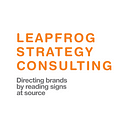Three Reasons to call a Semiotician and buy a piece of Semiotic Research.
I had a conversation recently with the head of CMI of a large Indian corporate, who had bought a piece of semiotics research a while ago. We were discussing semiotics vs. the qualitative research and quantitative research that he is so used to buying all the time. That’s when I realized, to be honest, that he had been “sold” a piece of semiotics along with Qualitative research. He had not “bought” it.
This distinction between being “sold” and “buying” is an old one in marketing. Insurance is “sold” while fashion is “bought”. For something to be “bought”, it has to be desired and the perceived value of “buying” has to be apparent to all — the buyer, the seller and all other users.
Where as when something is “sold”, the value of it is much more deeply appreciated by the seller than it is by the buyer. The buyer often has a shallow understanding of the product or service and for various reasons, sees no logic or has little incentive to deepen his/her understanding. Hence the product or service in question is often “sold” as a “bundle” with something else that the buyer is keen to buy. Which is exactly what had happened in that case.
That set me thinking about the year gone by, viz 2019 and the instances when Clients had approached us with the intent to “buy” a piece of semiotics research and the use that they made of it thereafter.These are the three types of challenges for which our Clients had ‘bought’ Semiotics, to benefit them:
- A Semiotic Brand Audit to gain deeper insight into their brand’s signs and symbols which have been used consistently over time, in order to evolve the brand’s future direction
- Design Semiotics for Packaging to decode the visual language of the category, before briefing the design agency for a packaging refresh
- Cultural Semiotics for Brand Repositioning in order to anchor thought and gain a forward view
The first was a Client team (marketing + CMI together) who manage a century old brand, billion $+ in sales but who operate in a media dark and communication restricted market. They wanted a Semiotic Brand Audit done for their brand in order to decode the signs and symbols that the brand has used in its history, which are its brand assets — from colours to visual images. Their questions were to do with how these signs and symbols should be evolved as times have changed and at an overall level, how the brand itself should be redefined for changing times. Their Ad Agency, a leading one in India, whose planners claimed to know ‘semiotics’, had been approached with the same question and they had responded with creative recommendations. The Client understood that their Agency was not up to the task and knew that they needed a proper Semiotic Audit to be carried out on their brand as the starting point for strategic planning and re-design. They needed an experienced Semiotician team to work with them.
The second is a Client CMI team who manage a skin care brand that targets young millennial women. They knew that the brand’s packaging needs an upgrade and a refresh. They were also aware that the beauty/skin care/cosmetics market is ultra-competitive and changing rapidly. They wanted guidance on packaging re-design, using a more strategic approach. Having done consumer work on packs before, they were also aware of the limits of consumer articulation. They believed that a Design Semiotics study of packaging to decode the visual language of beauty/skincare for the millennial TG would be most useful to them. It could get the client and agency teams talking the same language. It could also save the teams a lot of wasted time, energy and effort through clarity and alignment.
The third is a leading Business/Marketing consultancy who were working with a big Indian Auto manufacturer to rethink and re-position their brand. They wanted a piece of Cultural Semiotics to be done to decode the changing notions of power/dominance and masculine values. While they had done all the work of looking at the market data, consumer research, segmentation studies etc provided by the Client, they still needed a forward view of culture to anchor their strategic thinking into. They needed to see the big picture of culture change more clearly.
So when do Clients ‘buy’ Semiotics and bring it into the marketing process, which in most cases is very well set and divided among qualitative research and design/packaging/communications agencies? They do so when they appreciate the limits to consumer articulation. And when they want to lead consumers to a new vision rather than follow them and mirror back to them what they already know.
So, now you know, when to call a Semiotician to work with your team.
